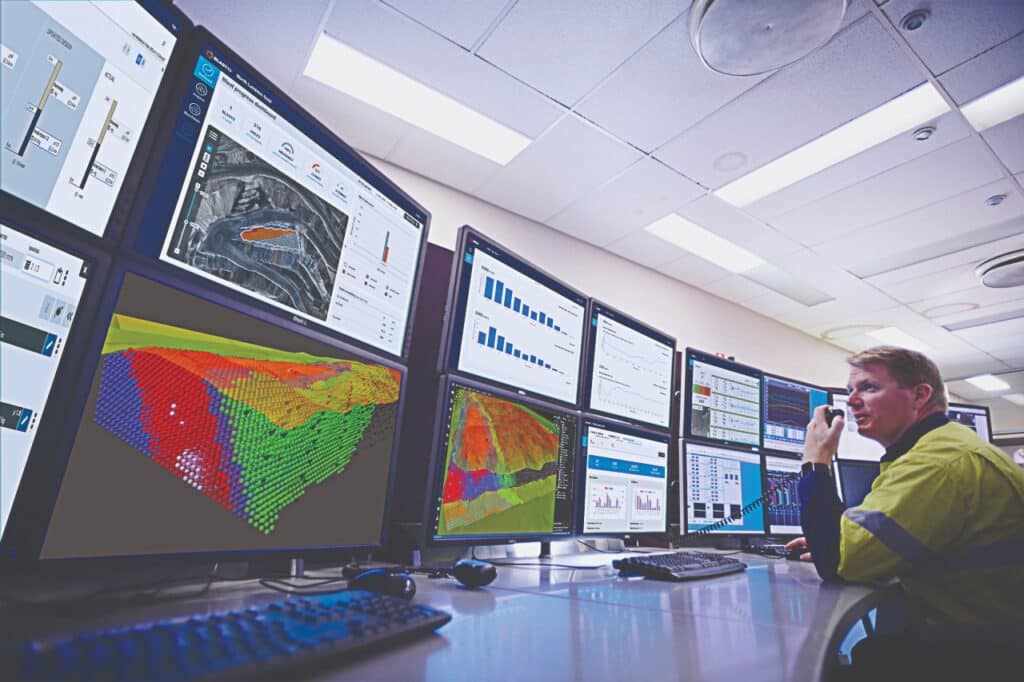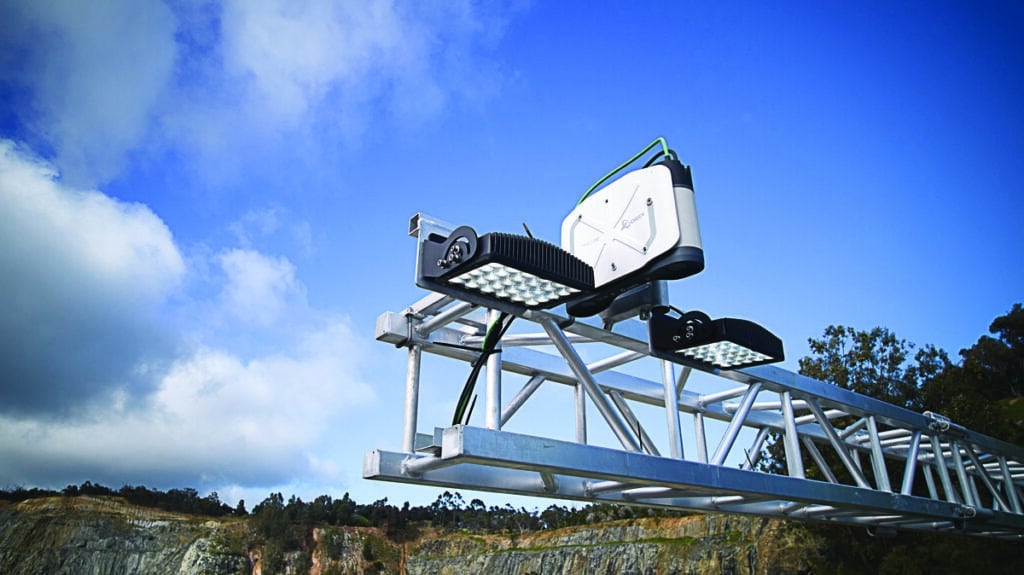A technology revolution is enabling Orica to conquer operational problems customers had been wrestling with for decades.
When Orica chief executive officer Sanjeev Gandhi spoke at a Melbourne Mining Club luncheon in early June, he discussed the company’s commitment to enabling decarbonisation through innovation.
“Our purpose is to sustainably mobilise the earth’s resources,” he said. “Put simply, how can we help our customers responsibly extract the resources critical to supporting a better future for us all?”
Having supported the Australian resources industry with commercial explosives and blasting solutions for over a century, Orica has a unique opportunity to incite the industry’s new frontier – where digitalisation, automation and electrification are the key change-drivers.
It has historically been difficult to control the outcomes of a blast, leading to potential ore loss and dilution, but Orica has developed a suite of solutions designed to put this quandary to bed. The OREPro 3D Predict and FRAGTrack digital blasting solutions can support improved pre-blast preparation and post-blast analysis and planning, ensuring customers get the most out of every blast, leading to better outcomes downstream.
“Before the ore gets to the crusher and subsequent downstream processes, we want it to be at a particle size distribution (PSD) level where it maximises the throughput for our customers,” Orica senior manager – AusPac digital solutions David Reyes told Australian Mining.
“So what we’re doing is providing customers with access to controlled variants as available within the operational workflow. This ensures they can process more tonnes with the same inputs of energy, water and diesel.”
OREPro is a software application that accurately models blast movement without hardware or surveys, supporting iterative blast design and improved grade control.
Orica senior manager – digital products Matthew Craft explained the solution in more detail.
“Historically, ore and blast movement has been reactively measured and modelled,” he told Australian Mining. “What we wanted to do with OREPro was move towards a predictive and estimation state so we can forecast what will happen when a blast occurs.”
“OREPro enables us to pull levers and run scenarios to forecast blast performance.
“Explosives are chaotic by nature; however, there are factors that can be controlled. So we want to predict what will happen and then adjust to get a tailored outcome.”

Craft said the ability to predict a blast “opens up a multitude of other doors”.
“If we can forecast, we can optimise for the preferred outcome,” he said. “Then we can start to play around with intelligent blast design, optimisation, and things like artificial intelligence (AI), where we have an automated prescriptive data analytics capability.”
Through OREPro, mining companies and contractors can achieve the specific blasting outcomes they desire, while having the ability to plan blasts more readily and prepare downstream operations accordingly.
Reyes said Orica’s digital solutions – including OREPro – are creating new workflows and concepts that customers could not previously access.
“Customers now have the computing power to model a full blast in a couple of minutes, or even seconds, depending on the size of the blast,” he said.
“Geology and drill-and-blast teams can now have a back-and-forth interaction, where the two can quickly communicate and agree on the best blast outcome or what the parameters need to be.
“This couldn’t happen in the past because it would take hours, even weeks, to run blasts with previous technologies. So we’re creating new collaboration workflows to really strive for the best possible outcomes for what is a chaotic event.”
OREPro 3D Predict is complemented by Orica’s globally recognised FRAGTrack technology, an automation fragmentation measurement tool designed to provide rapid insights into blast outcomes, including for downstream applications.
FRAGTrack has been used to support fragmentation measurements for shovels, haul trucks, loaders and conveyors, where the optimisation of factors such as particle size distribution is key to the efficiency of mining plant.
As one of Orica’s most trusted technologies, FRAGTrack has evolved from being a historical analysis tool that enabled operators to reflect on blast performance and develop related strategies, to what is now a real-time solution.
“We’ve turned FRAGTrack into a technology that autonomously triggers and processes fragmentation samples without having an impact on the haulage operation,” Reyes said.
“New developed extensions such as FRAGTrack Gantry, where a haul truck carrying blasted material drives under a gantry-mounted machine vision system. This not only captures and develops an automated profile of fragmentation, giving us accurate and quantifiable feedback of blast performance, but it also detects oversize in real-time.”

Orica has seen operators experience significant downtime due to oversized blast fragmentations blocking and jamming crushers.
“This refreshed version of FRAGTrack now gives us both the historical analysis and the real-time alerts, tapping into the operational needs of the mine,” Reyes said.
“We’re not only evaluating what the previous blast’s performance was, but also ensuring our customers don’t experience any crusher downtime, which can have significant economic impacts due to lost productivity.”
Advances in computer science are inspiring a technology revolution, and this has supported the evolution of FRAGTrack to be the multi-faceted solution it is today. It has also enabled Orica to become a globally recognised technology pioneer.
But the job’s not done yet.
“The computer-science revolution has seen the emergence of capabilities such as practical AI and cloud compute,” Craft said.
“This is what we’re trying to apply to the mining market.
“We’re interested in pioneering technology that helps solve age-old problems. Blast movement has been an issue for years and high-volume fragmentation data has been a desire for decades.
“It’s only now that we have the computing power to solve these problems in practical ways.
“Blast movement and fragmentation modelling has been possible in the past, but it’s never been practical. But with high-volume, high-resolution datasets now available due to modern technology capabilities, this is enabling Orica to conquer problems customers had previously wrestled with for decades.”
This feature appeared in the July 2023 issue of Australian Mining.


.jpg)

